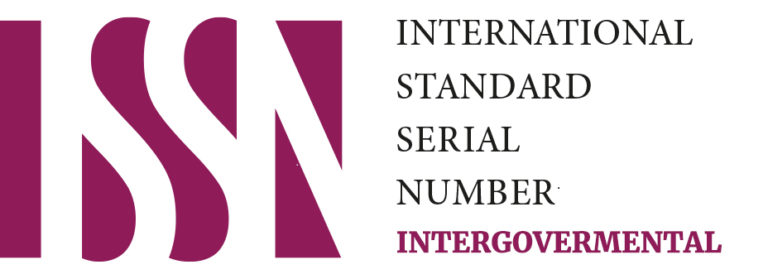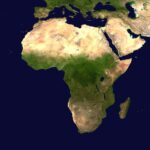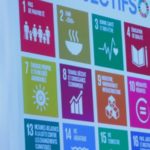ABSTRACT
| This paper critically examines the extent to which Islamic banks in ASEAN countries genuinely contribute to the United Nations Sustainable Development Goals (SDGs) beyond symbolic or performative compliance. While Islamic finance shares many ethical principles with the SDG agenda — such as financial inclusion, equitable growth, and environmental stewardship — there is growing debate over whether these shared ideals are meaningfully embedded in institutional practice, partly due to institutional inertia, limited ESG expertise among Shariah boards, and a regulatory landscape that prioritizes compliance over ethical performance. This paper explores how Islamic financial institutions in Malaysia and Indonesia integrate the SDGs into their product design, corporate governance, and impact reporting. The research draws on regulatory frameworks and case studies of banks in ASEAN to analyze how far Islamic banks have moved from ethical alignment to measurable development impact. By identifying both enabling factors and critical gaps, this paper offers policy recommendations for enhancing the role of Islamic finance in global sustainable development initiatives. | |
- Introduction
In recent years, Islamic finance has emerged as a fast-growing alternative to conventional financial systems, rooted in ethical principles such as the prohibition of interest (riba), risk-sharing, and investments that promote social justice and equity. These foundational values align closely with the ambitions of the United Nations Sustainable Development Goals (SDGs), a comprehensive global agenda adopted in 2015 to eradicate poverty, reduce inequality, and promote environmental sustainability. As calls for responsible finance and sustainable development grow louder across the globe, Islamic finance is increasingly positioned as a natural ally in achieving these transformative goals.
Nowhere is this convergence more relevant than in the ASEAN region, particularly in countries like Malaysia and Indonesia, where Islamic finance has matured into a significant sector of the financial landscape. Institutions in these countries are actively marketing their alignment with SDG targets — issuing green sukuk, investing in financial inclusion, and promoting ethical governance structures. Islamic finance and sustainable development appear compatible, but how far are these values being translated into real, measurable outcomes? In other words, are Islamic financial institutions genuinely integrating the SDGs into their operational and strategic frameworks, or are they engaging in symbolic compliance that lacks real impact?
Despite the promising rhetoric, there is a noticeable research gap in evaluating how deeply Islamic banks in the ASEAN region are embedding SDG principles in their practices. Much of the existing discourse highlights theoretical alignment but offers little in the way of empirical evaluation or institutional critique. This paper aims to address that gap by analyzing the extent of SDG integration within Islamic banks in Malaysia and Indonesia, focusing on areas such as product innovation, sustainability reporting, and governance. By examining both the successes and shortcomings, this study contributes to a deeper understanding of the evolving role Islamic finance can play in supporting sustainable development — not just in theory, but in practice.
- Islamic Finance and The Sustainable Development Goals: Conceptual Foundations
Islamic finance is governed by a set of ethical and legal principles derived from Islamic law (Shariah), emphasizing fairness, social justice, and moral responsibility. Core tenets include the prohibition of riba, the avoidance of excessive uncertainty (gharar), and the promotion of risk-sharing through equity-based contracts like mudarabah and musharakah. Transactions must be backed by real economic activity, reflecting Islam’s emphasis on transparency and shared responsibility. These principles form the ethical foundation of Islamic finance and distinguish it from conventional financial systems that often prioritize speculative gains and interest-based lending.[1]
Instruments like sukuk (Islamic bonds), takaful (cooperative insurance), and Islamic microfinance are structured to support socially beneficial economic activities while aligning with these core values. Moreover, Islamic investment ethics prohibit financing activities that involve alcohol, gambling, or other socially harmful sectors, reinforcing its commitment to moral outcomes alongside financial ones.[2]
The United Nations’ 2030 Agenda for Sustainable Development outlines 17 interconnected Sustainable Development Goals (SDGs) that aim to eliminate poverty, reduce inequality, and protect the planet. These goals are organized around three pillars —economic, social, and environmental sustainability — and require an unprecedented scale of financial mobilization to be realized. The UN estimates an annual SDG financing gap of $5–7 trillion globally, highlighting the urgent need for diverse funding sources and innovative financial instruments.[3]
Development finance has traditionally relied on multilateral institutions, donor assistance, and public-private partnerships. However, with the rise of ESG investing and climate finance, there is growing recognition of the private sector’s role in advancing development objectives. Instruments such as green bonds, impact investing, and blended finance have become central to closing the SDG funding.[4]
2.1. Ethical and Operational Overlaps Between Islamic Finance and the SDGs
Islamic finance shares intrinsic synergies with the SDG agenda, particularly in areas such as poverty alleviation (SDG 1), financial inclusion (SDG 8), and environmental stewardship (SDG 13). Mechanisms like zakat (obligatory almsgiving), waqf (charitable endowments), and qard-hasan (benevolent loans) are explicitly geared toward social equity and inclusive development. These tools reflect Islamic finance’s emphasis on the equitable redistribution of wealth, making them highly compatible with global development goals.[5]
Moreover, emerging practices in Islamic sustainable finance — such as green sukuk, Islamic ESG funds, and socially responsible investing — have begun to mirror global frameworks in development finance. This convergence enhances the operational relevance of Islamic finance in the SDG era, allowing institutions to simultaneously fulfill Shariah objectives and international development mandates.[6]
2.2. Maqasid al-Shariah and Sustainable Development: Convergence or Contradiction?
At a deeper level, Islamic finance’s ethical compass is guided by maqasid al-Shariah — the overarching objectives of Islamic law, which seek to preserve religion, life, intellect, lineage, and wealth. These objectives strongly overlap with the moral and developmental aspirations of the SDGs. Both frameworks emphasize human dignity, equitable access to resources, and the protection of future generations. For example, the preservation of wealth aligns with economic empowerment (SDG 8), while the preservation of life relates directly to health (SDG 3) and environmental protection (SDG 13).[7] However, there are areas where the SDGs and maqasid diverge — particularly in philosophical underpinnings. While SDGs are secular and rooted in universalism, maqasid al-Shariah is faith-based and grounded in divine accountability. These differences may create tensions when operationalizing shared goals across diverse institutional settings. Nevertheless, the complementarity between the two has inspired scholars to propose frameworks that bridge both, such as using maqasid-driven ESG models in Islamic finance.
Maqasid al-Shariah, the higher objectives of Islamic law, prioritize the protection and flourishing of five essential values: religion (din), life (nafs), intellect (‘aql), progeny (nasl), and wealth (mal). These aims are not simply theological but offer a framework for holistic human development. Modern Islamic finance is built on this foundation, seeking not only financial legality but also socio-economic justice, ethical conduct, and sustainability. When viewed through this lens, a strong conceptual alignment with the United Nations’ Sustainable Development Goals (SDGs) becomes clear.
The SDGs, adopted in 2015, advocate for inclusive growth, poverty eradication, health, education, environmental sustainability, and gender equality — objectives that resonate with the maqasid. Instruments of Islamic finance are designed to achieve these outcomes through equitable resource distribution and community development. For instance, zakat directly supports SDG 1 (No Poverty), while waqf can be leveraged for SDG 4 (Quality Education) and SDG 3 (Good Health and Well-being). Similarly, the Islamic prohibition on environmental degradation, grounded in the concept of khalifa (human stewardship), aligns with SDG 13 (Climate Action). These parallels provide a robust case for ethical and operational convergence between the Islamic and global sustainability frameworks.
Despite this conceptual overlap, significant tensions exist in how maqasid al-Shariah and the SDGs define and measure development. The SDGs are rooted in secular humanism, with outcomes evaluated largely through quantitative, technocratic metrics. By contrast, maqasid originates in divine revelation and moral theology, emphasizing both external impact and internal ethical intention (niyyah). This creates epistemological friction in institutional contexts where Islamic financial institutions are expected to simultaneously comply with Shariah and deliver on global performance indicators.
Scholars like Rehman, Hasan, and Muhammad (2022) highlight that the SDGs often overlook dimensions such as spiritual development, ethical consciousness, and divine accountability — core to the Islamic worldview[8]. This limits the ability of Islamic financial institutions to rely on SDG frameworks alone when assessing the moral integrity of their operations. Similarly, while environmental sustainability is a shared value, Islamic teachings frame it through divine trusteeship, whereas SDG logic often centers on anthropocentric responsibility.[9]
The risk here is twofold: first, Islamic finance might reduce Shariah compliance to a formalistic legal checklist; second, it may adopt SDG-aligned tools without critically evaluating their alignment with Islamic ethics. Consequently, there is a pressing need to develop an integrated framework in which maqasid al-shariah not only supports but also critically evaluates and enhances development strategies aligned with the Sustainable Development Goals. This requires Islamic finance to embed ethical reasoning into impact assessments and to advocate for metrics that capture moral and communal well-being, not just market efficiency.
2.3. Islamic Banking In ASEAN: Market Overview and Institutional Landscape
Islamic finance has become an integral part of the financial landscape in Southeast Asia, especially in Malaysia and Indonesia. Driven by strong demand from Muslim populations and proactive state-led strategies, the region has developed one of the most dynamic Islamic financial ecosystems globally. Malaysia stands out as a global Islamic finance hub. This is due to a robust regulatory framework and coordinated oversight from Bank Negara Malaysia (BNM), the Securities Commission, and the Islamic Financial Services Board. Indonesia, while more decentralized and socially oriented, has shown rapid growth through grassroots Islamic banking, zakat institutions, and fintech innovation.
At the macroeconomic level, Islamic finance has been empirically linked to economic growth in ASEAN countries. A dynamic panel analysis shows that Islamic financing contributes positively to GDP growth in the region, especially when integrated with real sector activities and supported by effective governance.[10] The region’s Islamic financial institutions are increasingly seen as key players not only in economic inclusion but also in financing sustainable development.
2.3.1 Comparative Institutional Framework: Malaysia versus Indonesia
Malaysia’s Islamic finance industry is characterized by high levels of institutionalization and standardization. BNM’s Shariah Governance Framework ensures that all Islamic financial institutions (IFIs) adhere to consistent principles and ethical benchmarks. Malaysia has also led globally in green sukuk issuance, aligning Islamic finance tools with the SDG agenda. The integration of ESG considerations into Islamic financial regulations and product structures is relatively mature compared to other jurisdictions.[11] Malaysia’s regulatory architecture has facilitated a more coordinated implementation of ESG metrics into Islamic financial practices. However, this top-down structure may also limit bottom-up innovation, as institutions tend to focus on compliance with BNM guidelines rather than internalizing broader ethical commitments.
Indonesia, in contrast, exhibits a more pluralistic regulatory environment. The Otoritas Jasa Keuangan (OJK), Indonesia’s financial services authority, plays a supervisory role similar to BNM but often faces challenges in enforcing Islamic finance governance uniformly across decentralized regions. A 2020 study assessing OJK’s effectiveness in acting as a “muhtasib” (moral regulator) found regional variations in oversight capacity and compliance, especially in Central Java and Yogyakarta.[12] Nevertheless, OJK has significantly strengthened institutional frameworks in recent years to promote Islamic finance development and SDG alignment.
2.3.2 Regional Performance and Stability Trends: Linking Efficiency with ESG Integration
The performance and stability of Islamic banks in ASEAN are not just financial metrics — they are foundational to achieving long-term sustainability and social impact. A 2020 Data Envelopment Analysis Window Analysis, assessing the efficiency of Islamic banks across Malaysia, Indonesia, Brunei, and Thailand, found Malaysia to be the most consistently efficient, with an average efficiency rate of 96%, followed by Indonesia at 67%.[13] This efficiency reflects not only operational discipline but also the institutional environment: in Malaysia, Islamic banks operate under a tightly coordinated regulatory and Shariah governance framework, which provides clarity, accountability, and consistency in financial reporting, including emerging ESG metrics.
Efficiency and stability also play a crucial role in enabling banks to channel funds toward sustainable activities. A stable bank with clear risk management systems is more likely to innovate in sustainability-linked financing, such as issuing green sukuk or supporting microfinance for underserved communities. In contrast, inconsistent performance or governance fragmentation — as seen in some Indonesian and Bruneian banks — can limit institutional capacity to develop, evaluate, and scale up impact-driven finance products.
Thus, ESG integration in Islamic banking is not merely a reporting exercise; it is closely tied to institutional robustness. Without operational stability, banks may struggle to engage in long-term green finance or develop inclusive financial instruments that reflect Islamic ethical commitments. The institutional foundation must be sound for ESG-linked Islamic financial products to flourish.
2.3.3 Key Takeaways and Policy Implications: Toward an ESG-Maqasid Synthesis
The comparison between Malaysia and Indonesia’s Islamic banking sectors highlights critical lessons for embedding ESG and SDG goals within Islamic finance. Malaysia’s strength lies in its centralized and harmonized approach — where regulatory bodies such as Bank Negara Malaysia and the Securities Commission Malaysia (SC) provide explicit guidelines for integrating ESG metrics with Shariah compliance.
BNM’s Shariah Governance Framework (SGF) outlines the expectations for Islamic financial institutions (IFIs) to establish a robust Shariah governance structure. This includes the integration of Shariah compliance considerations into all aspects of operations, ensuring that ESG initiatives align with Islamic principles. BNM also introduced the Value-based Intermediation (VBI) initiative to encourage IFIs to deliver positive and sustainable impact to the economy, community, and environment, consistent with the shareholders’ sustainable returns and long-term interests. The VBI framework emphasizes the alignment of financial practices with universal values, including those related to ESG. Besides, Guidelines on Sustainable and Responsible Investment (SRI) Funds and Maqasid al-Shariah Guidance from SC have enabled the development of Islamic ESG funds, sustainability-linked sukuk, and disclosure mandates that reflect both global ESG norms and maqasid al-shariah values.[14]
Indonesia, with its diverse institutional architecture and regional governance challenges, shows promise in democratizing Islamic finance access — especially through fintech and microfinance — but struggles with uneven implementation.[15] The link between institutional governance and ESG alignment is vital. ESG integration in Islamic finance cannot be fully realized without systemic support: clear Shariah-ESG frameworks, performance metrics beyond legal compliance, and alignment with sustainability targets such as the SDGs.
The link between institutional governance and ESG alignment is vital. ESG integration in Islamic finance cannot be fully realized without systemic support: clear Shariah-ESG frameworks, performance metrics beyond legal compliance, and alignment with sustainability targets such as the SDGs. For instance, efficient Islamic banks are more likely to engage in SDG-linked impact investing, while unstable or poorly governed institutions may default to superficial ESG adoption — sometimes termed “greenwashing” or “shariah-washing.”
Going forward, ASEAN policymakers can prioritize the following:
- Cross-border ESG disclosure standards aligned with Islamic ethics
- Regional capacity-building programs for Shariah boards and ESG officers
- Sustainable finance labs that pilot new products like Islamic impact bonds and waqf-based climate funds
- Stronger zakat-governance linkages to enhance SDG delivery on health, education, and poverty
Aligning Islamic banking performance with ESG principles is not only feasible but essential. ASEAN’s unique position as a leader in both Islamic finance and sustainability innovation makes it an ideal testbed for integrating ethical finance with global development mandates.
3. Methodology
Data for this paper primarily come from documents analysis. Documents include journal articles, relevant websites, international or municipal laws, public policies and official reports. The author has reviewed them to get the background information, get normative evidence, seek corroboration, and breed credibility of findings and conclusions. This technique was helpful for its unobtrusiveness; availability does not necessarily require prior permissions, primarily when published in public domains.
4. Assessing SDG Integration in Islamic Banks: Between Rhetoric and Reality
Islamic banks in ASEAN, particularly in Malaysia and Indonesia, have increasingly embraced the language of sustainability and ESG in their corporate communications. Sustainability reports from leading institutions often highlight alignment with the SDGs and commitments to ethical finance. However, the extent of actual integration remains uneven. Integrated reporting practices are frequently superficial, with disclosures often focused more on reputational signaling than substantive performance metrics.[16]
The inconsistency can be traced to a tension between regulatory expectations and institutional capacity. While regulators like BNM have issued sustainability guidelines and encouraged ESG-linked disclosures, the uptake has been voluntary in many cases. Additionally, Islamic banks may lack trained sustainability officers or the technical infrastructure to measure their environmental and social impact beyond basic financial compliance. This results in a disconnect between the public narrative of SDG alignment and the internal governance structures needed to drive meaningful sustainability integration.
4.1 Product Innovation and Impact: Are SDGs Reflected in Islamic Financial Instruments?
Islamic financial instruments like sukuk, takaful, and qard-hasan have natural affinities with the SDGs due to their ethical underpinnings. Yet, product innovation in this domain remains limited. Studies from Southeast Asia and beyond show that Islamic banks face structural barriers to developing SDG-focused products. These include high innovation costs, lack of interdepartmental collaboration, insufficient research and development, and sometimes a rigid interpretation of Shariah by conservative boards that hinders experimentation.[17]
Moreover, there is a tendency for Islamic banks to mimic conventional ESG products — like green bonds or microfinance — without fully integrating Shariah principles beyond legal form. This raises concerns about “shariah-washing,” where the ethical objectives of Islamic finance (e.g., financial inclusion, social justice) are sidelined in favor of formal compliance. The lack of innovation also stems from market demand: clients often prioritize competitive pricing and convenience over ethical impact, limiting incentives for banks to develop purpose-driven financial instruments.
4.2 Shariah Boards and Strategic Alignment with SDG Values
A critical institutional actor in Islamic finance is the Shariah board. These boards are mandated to ensure that products and operations conform to Islamic law. However, their role in advancing the SDG agenda remains underdeveloped. Many Shariah scholars have strong training in fiqh (jurisprudence) but lack exposure to sustainability concepts like carbon accounting, gender equity benchmarks, or climate-risk analytics. This epistemic gap limits the ability of Shariah boards to contribute meaningfully to ESG strategy formulation.
Recent studies suggest that board composition and governance practices play a crucial role in shaping sustainability priorities.[18] When Shariah boards operate in siloed legalistic modes, they often approve products based on formal compliance while ignoring their socio-economic impact. Conversely, boards that collaborate with sustainability officers or ESG committees are more likely to support innovative, impact-oriented financial instruments. Hence, reforming the training and mandate of Shariah boards could be pivotal in aligning Islamic banking with global development goals.
4.3 Stakeholder Perceptions: Customers, Regulators, and Global Institutions
A deeper challenge to SDG integration lies in the varying perceptions of stakeholders. Many customers of Islamic banks still associate Shariah-compliance strictly with interest avoidance rather than broader ethical outcomes. Regulators, while supportive of sustainability, often focus on macroprudential stability over transformative change. And international development bodies — such as the UNDP or World Bank — may struggle to engage Islamic financial institutions due to mismatches in terminology, operational models, and evaluation frameworks.
This disconnect perpetuates a cycle of low expectations and symbolic compliance. Without external pressure from regulators or informed demand from clients, Islamic banks have limited incentives to embed SDG goals at the core of their business models. Overcoming this inertia requires both top-down reforms (e.g., mandatory ESG disclosure) and bottom-up awareness-building (e.g., ethical literacy campaigns for customers).
4.3.1 Case Study: Maybank
Maybank Islamic’s 2023 Sustainability Report demonstrates a high level of institutional maturity in aligning Islamic finance operations with global sustainability frameworks. As the Islamic subsidiary of Maybank Group, Maybank Islamic adheres to maqasid al-shariah principles—focusing on the preservation of wealth, social justice, and ethical economic activity. Under the M25+ strategy, the bank has integrated environmental, social, and governance (ESG) goals into its core operations. It mobilized RM15.2 billion in sustainable finance by the end of 2023, with targeted portfolios addressing affordable housing, renewable energy, and SME empowerment.[19] The report explicitly reflects Islamic ethical mandates and maps these efforts to several SDGs, including SDG 7 (Affordable and Clean Energy), SDG 8 (Decent Work and Economic Growth), and SDG 10 (Reduced Inequalities).
What distinguishes Maybank from other banks is its relatively sophisticated ESG governance structure. The bank has established a dedicated Group Sustainability Council reporting to the Board, integrating ESG risk into enterprise-wide risk management. Its disclosures also emphasize stakeholder engagement, using materiality assessments and sustainability-linked KPIs to inform strategy.
Maybank Islamic’s approach goes beyond conventional ESG by embedding Islamic moral values into product structuring and risk frameworks. For instance, its Islamic Green Financing portfolio is structured using Shariah contracts like ijarah (leasing) and murabaha (cost-plus financing), ensuring both environmental impact and religious compliance. Moreover, the bank’s ESG governance is channeled through a Group Sustainability Council, which collaborates closely with the Shariah Committee — an integration rarely seen in conventional financial institutions. This setup helps assess ESG risks through both commercial and Shariah ethical lenses.
However, while Maybank Islamic leads the region in ESG disclosure and SDG alignment, gaps remain in translating these into measurable ethical outcomes. For example, while the bank reports on sustainability-linked loans and ESG screening tools, more detailed impact data — especially regarding carbon reduction, social equity outcomes, or ethical screening benchmarks — is needed to fully assess the degree to which Islamic finance principles are realized in practice. Nonetheless, Maybank Islamic serves as a promising model for how faith-based finance can operate within global ESG frameworks without compromising its foundational principles.
4.3.2 Case Study: Bank Syariah Indonesia
Bank Syariah Indonesia’s (BSI) sustainability disclosures reflect a younger, fast-evolving ESG strategy. BSI, as the largest Islamic bank in Indonesia, reported the allocation of IDR 57.7 trillion in financing to green and inclusive sectors, such as MSME empowerment, education, and halal industry development.[20] Its 2023 report links these activities to SDGs such as SDG 4 (Quality Education), SDG 9 (Industry, Innovation and Infrastructure), and SDG 11 (Sustainable Cities and Communities).
Notably, BSI has adopted a Sustainability Sukuk Framework to finance SDG-linked projects. This instrument, aligned with ICMA Green Bond Principles and Maqasid al-Shariah, positions BSI as a regional pioneer in Shariah-compliant climate finance. However, BSI’s sustainability governance remains less formalized compared to Maybank. The bank is still developing its ESG risk management toolkit and lacks detailed environmental metrics, such as carbon disclosures. Nevertheless, its grassroots orientation and focus on inclusivity — especially via digital Islamic microfinance — suggest strong alignment with the ethical mandates of Islamic finance.
5. Critical Gaps and Barriers – Institutional Challenges: Governance, Capacity, and Strategic Misalignment
Despite the increasing emphasis on SDG alignment, many Islamic banks in ASEAN struggle with institutional barriers that hinder substantive ESG integration. A common challenge is the lack of an embedded governance culture around sustainability. Many banks have sustainability teams or departments, but these often operate separately from Shariah boards and core risk functions. As a result, ESG goals are either marginal or treated as compliance exercises rather than strategic imperatives.[21]
Capacity constraints further exacerbate this misalignment. Staff may not have formal training in ESG metrics, SDG mapping, or ethical impact measurement, leading to inconsistencies in disclosures and limited internal ownership. While regulators like BNM and OJK have published sustainability guidelines, institutional uptake remains mixed — especially among second-tier banks and regional subsidiaries.
Another critical barrier lies within Shariah boards. While these boards are responsible for certifying the Islamic authenticity of financial products, they are often disconnected from global sustainability discourses. Most scholars on these boards are trained in classical jurisprudence, and few have exposure to climate science, gender policy, or social equity frameworks.[22] This results in a legalistic approach to Shariah compliance — where products are assessed for formal religious permissibility rather than ethical and developmental impact.[23]
The absence of interdisciplinary collaboration between Shariah experts and ESG professionals hinders innovation. Banks may default to replicating conventional green, social or related ESG products, simply repackaged with Shariah approval, without achieving meaningful alignment with maqasid al-shariah. This disconnect can lead to symbolic or partial integration of sustainability principles.
A particularly concerning trend is the growing risk of symbolic compliance —where Islamic banks adopt the language of ESG and SDGs without making structural changes to their operations. Several studies flag the danger of “greenwashing” in the banking sector, including Islamic institutions that issue green sukuk or publish sustainability reports but lack robust tracking of environmental or social outcomes.[24]
Such alignment is primarily motivated by the desire to maintain reputation and satisfy investor expectations, rather than by a genuine internal commitment to ESG principles. Without regulatory enforcement, third-party verification, or stakeholder scrutiny, symbolic compliance can become the norm. In Islamic finance, this may manifest as “shariah-washing,” where ethical claims are used to shield institutions from deeper accountability.
Lastly, broader ecosystem challenges — such as fragmented regulatory mandates, limited standardization across jurisdictions, and low ESG literacy among customers — pose structural barriers. Although ESG scores for Islamic banks are observed to increase internationally, these evaluations are predominantly shaped by external investor perceptions, often superseding internally developed impact assessment frameworks.[25]
Furthermore, customer behavior still plays a critical role. Many clients choose Islamic banks for religious reasons without demanding ESG performance, which reduces market pressure on banks to innovate. This lack of bottom-up accountability dilutes the business case for deep sustainability integration.
6. A Way Forward
This paper has explored how Islamic banks in ASEAN, particularly in Malaysia and Indonesia, are navigating the intersection between Islamic financial principles and global sustainable development goals. While these institutions often cite ethical alignment with the SDGs, the findings suggest that integration remains inconsistent and often rhetorical. Significant gaps exist in impact measurement, governance alignment, and product-level design. Regulatory frameworks are evolving, but not always fast enough to incentivize deeper transformation.
For Islamic finance to move beyond symbolic compliance, institutions must integrate maqasid al-shariah into their ESG frameworks. This means embedding ethical metrics that go beyond profitability and regulatory compliance — such as equitable wealth distribution, access to essential services, and intergenerational justice. Standard ESG disclosures should be supplemented with maqasid-aligned KPIs, including the impact of financing on poverty alleviation, community well-being, and environmental stewardship. Islamic financial institutions should collaborate with think tanks, Shariah scholars, and multilateral organizations to co-develop these indicators.
Regulators across ASEAN can introduce incentives for Islamic banks to adopt robust ESG practices. This could include capital relief for sustainability-linked financing, green sukuk tax breaks, or public-private partnerships that reward SDG-aligned initiatives. Furthermore, regional regulatory bodies like the Islamic Financial Services Board (IFSB) should work toward harmonizing ESG disclosure standards specific to Islamic finance. A common reporting framework, co-endorsed by both Shariah and sustainability experts, would reduce fragmentation and boost investor confidence.
Multilateral institutions such as the Islamic Development Bank (IsDB), United Nations Development Program, and World Bank can serve as crucial bridges between Islamic finance and global development agendas. These organizations may want to expand their technical assistance and co-financing programs targeted at Islamic banks aiming to develop SDG-linked products. Initiatives like green waqf, zakat-based health financing, and Islamic impact bonds can be incubated through sustainability labs jointly run by governments, IFIs, and local institutions. By creating scalable models for ethical finance, these institutions can help Islamic banks transition from niche ethical players to mainstream drivers of global sustainability.
6. Conflict of Interest
The author states that there is no conflict of interest.
7. Information and Acknowledgment
The author acknowledges acknowledges the great support from Euclid University and my supervisor, Dr. Fazrihan Duriat, in completing this paper.
The author works at the Global Green Growth Institute (GGGI). However, views expressed herein do not reflect the official position of the United Nations or Global Green Growth Institute.
References and Bibliography
Ahmed, R., F. Yusuf, and M. Ishaque. “Green Bonds as a Bridge to the UN Sustainable Development Goals on Environment: A Climate Change Empirical Investigation.” International Journal of Finance & Economics (2023).
Bank Syariah Indonesia. Sustainability Report 2023. PT Bank Syariah Indonesia Tbk, 2023. https://ir.bankbsi.co.id/misc/SR/SR2023-EN.pdf.
Banuri, Sheheryar, Lucia Milena Murgia, and Imtiaz Ul Haq. “The Power of Religion: Islamic Investing in the Lab.” International Review of Financial Analysis 96 (2024): 103690.
Chaudhry, N., M. Roomi, and S. Dar. “Barriers to Financial Product Innovation in Islamic Banks in Pakistan.” Journal of Islamic Accounting and Business Research 11 (2020): 346–360.
Dirie, Khadar, Md. Mahmudul Alam, and Selamah Maamor. “Islamic Social Finance for Achieving Sustainable Development Goals: A Systematic Literature Review and Future Research Agenda.” International Journal of Ethics and Systems (2023).
General Council for Islamic Banks and Financial Institutions (CIBAFI). Climate Action Report: Islamic Banks and the Role of Climate Risk Management. CIBAFI, 2022. https://www.cibafi.org/Files/L1/Content/CI2237-Climate%20Action%20Report.pdf.
Haddou, S., and Sawssen Mkhinini. “Investigating the Linkage between Shariah Board Size, Liquidity Risk and Bank Stability through an Asymmetric Lens.” Journal of Islamic Accounting and Business Research (2022).
Harahap, Burhanudin, Tastaftiyan Risfandy, and Inas Nurfadia Futri. “Islamic Law, Islamic Finance, and Sustainable Development Goals: A Systematic Literature Review.” Sustainability (2023).
Judijanto, L., Sabil Mokodenseho, Ismail Fahriassin Birah, Anggi Mamonto, and Gia Lestia Mokodongan. “The Role of Sharia Risk Management, Islamic Investment Ethics, and Riba-Free Financing in the Development of the Halal Industry in Indonesia.” Jurnal Multidisiplin West Science (2024).
Ledhem, Mohammed Ayoub, and Mohammed Mekidiche. “Islamic Finance and Economic Growth Nexus: An Empirical Evidence from Southeast Asia Using Dynamic Panel One-Step System GMM Analysis.” Journal of Islamic Accounting and Business Research (2021).
Liu, Zhuang, and Xingyi Li. “The Impact of Bank Fintech on ESG Greenwashing.” Finance Research Letters (2024).
Maybank Islamic Berhad. Sustainability Report 2023. Maybank Islamic, 2023. https://www.maybank.com/iwov-resources/documents/pdf/annual-report/2023/Maybank-Sustainability-Report-2023.pdf.
Nailah, Nailah, and Aam Slamet Rusydiana. “Efficiency and Stability of Islamic Banking in ASEAN: DEA Window Analysis.” Tazkia Islamic Finance and Business Review (2020).
Paltrinieri, Andrea, A. Dreassi, M. Migliavacca, and Stefano Piserà. “Islamic Finance Development and Banking ESG Scores: Evidence from a Cross-Country Analysis.” Research in International Business and Finance 51 (2020): 101100.
Raimi, L., Ibrahim Adeniyi Abdur-Rauf, and Saheed Afolabi Ashafa. “Does Islamic Sustainable Finance Support Sustainable Development Goals to Avert Financial Risk in the Management of Islamic Finance Products? A Critical Literature Review.” Journal of Risk and Financial Management (2024).
Rehman, H. A., Hamid Hasan, and M. Muhammad. “Compatibility of Sustainable Development Goals (SDGs) with Maqasid al-Shariah: Are There Any Missing Goals.” Islamic Banking and Finance Review (2022).
Rethel, Lena. “Economic Governance Beyond State and Market: Islamic Capital Markets in Southeast Asia.” Journal of Contemporary Asia 48 (2018): 301–321.
Salam, A., and Syaiful Muhamad Irsyad. “Peranan Otoritas Jasa Keuangan (OJK) Sebagai Lembaga Muhtasib Dalam Industri Keuangan Syariah Di Indonesia” 9 (2020): 73.
Tumewang, Y., Danis Nurul Yunita, and M. Hassan. “A Bibliometric Analysis of ESG in Islamic Banks: Mapping Current Trends and Projecting Future Research Direction.” Journal of Financial Reporting and Accounting (2024).
Yusuf, Muhammad, Elis Sondang Dasawaty, Martha Ayerza Esra, Prima Apriwenni, Carmel Meiden, and Mochammad Fahlevi. “Integrated Reporting, Corporate Governance, and Financial Sustainability in Islamic Banking.” Uncertain Supply Chain Management (2024).
[1] L. Judijanto et al., “The Role of Sharia Risk Management, Islamic Investment Ethics, and Riba-Free Financing in the Development of the Halal Industry in Indonesia,” Jurnal Multidisiplin West Science (2024), 374
[2] Sheheryar Banuri, Lucia Milena Murgia, and Imtiaz Ul Haq, “The Power of Religion: Islamic Investing in the Lab,” International Review of Financial Analysis 96 (2024): 103690
[3] Khadar Dirie, Md. Mahmudul Alam, and Selamah Maamor, “Islamic Social Finance for Achieving Sustainable Development Goals: A Systematic Literature Review and Future Research Agenda,” International Journal of Ethics and Systems (2023), 1
[4] R. Ahmed, F. Yusuf, and M. Ishaque, “Green Bonds as a Bridge to the UN Sustainable Development Goals on Environment: A Climate Change Empirical Investigation,” International Journal of Finance & Economics (2023), 2432
[5] L. Raimi, Ibrahim Adeniyi Abdur-Rauf, and Saheed Afolabi Ashafa, “Does Islamic Sustainable Finance Support Sustainable Development Goals to Avert Financial Risk in the Management of Islamic Finance Products? A Critical Literature Review,” Journal of Risk and Financial Management (2024), 8
[6] Burhanudin Harahap, Tastaftiyan Risfandy, and Inas Nurfadia Futri, “Islamic Law, Islamic Finance, and Sustainable Development Goals: A Systematic Literature Review,” Sustainability (2023), 12
[7] H. A. Rehman, Hamid Hasan, and M. Muhammad, “Compatibility of Sustainable Development Goals (SDGs) with Maqasid al-Shariah: Are There Any Missing Goals,” Islamic Banking and Finance Review (2022), 114-122
[8] Ibid.
[9] Harahap, Risfandy, and Futri, “Islamic Law, Islamic Finance, and Sustainable Development Goals: A Systematic Literature Review.”,
[10] Mohammed Ayoub Ledhem and Mohammed Mekidiche, “Islamic Finance and Economic Growth Nexus: An Empirical Evidence from Southeast Asia Using Dynamic Panel One-Step System GMM Analysis,” Journal of Islamic Accounting and Business Research (2021), 1165
[11] Lena Rethel, “Economic Governance Beyond State and Market: Islamic Capital Markets in Southeast Asia,” Journal of Contemporary Asia 48 (2018): 301–321.
[12] A. Salam and Syaiful Muhamad Irsyad, “Peranan Otoritas Jasa Keuangan (OJK) Sebagai Lembaga Muhtasib Dalam Industri Keuangan Syariah Di Indonesia” 9 (2020): 73.
[13] Nailah Nailah and Aam Slamet Rusydiana, “Efficiency and Stability of Islamic Banking in ASEAN: DEA Window Analysis,” Tazkia Islamic Finance and Business Review (2020), 1
[14] Rethel, “Economic Governance Beyond State and Market: Islamic Capital Markets in Southeast Asia.”
[15] Salam and Irsyad, “Peranan Otoritas Jasa Keuangan (OJK) Sebagai Lembaga Muhtasib Dalam Industri Keuangan Syariah Di Indonesia.”
[16] Muhammad Yusuf et al., “Integrated Reporting, Corporate Governance, and Financial Sustainability in Islamic Banking,” Uncertain Supply Chain Management (2024), 274
[17] N. Chaudhry, M. Roomi, and S. Dar, “Barriers to Financial Product Innovation in Islamic Banks in Pakistan,” Journal of Islamic Accounting and Business Research 11 (2020): 346–360.
[18] Muhammad Yusuf et al., “Integrated Reporting, Corporate Governance, and Financial Sustainability in Islamic Banking,” Uncertain Supply Chain Management (2024), 283
[19] Maybank Islamic Berhad, Sustainability Report 2023 (Maybank Islamic, 2023), 42 https://www.maybank.com/iwov-resources/documents/pdf/annual-report/2023/Maybank-Sustainability-Report-2023.pdf.
[20] Bank Syariah Indonesia, Sustainability Report 2023 (PT Bank Syariah Indonesia Tbk, 2023), 44 https://ir.bankbsi.co.id/misc/SR/SR2023-EN.pdf.
[21] Y. Tumewang, Danis Nurul Yunita, and M. Hassan, “A Bibliometric Analysis of ESG in Islamic Banks: Mapping Current Trends and Projecting Future Research Direction,” Journal of Financial Reporting and Accounting (2024), 15
[22] General Council for Islamic Banks and Financial Institutions (CIBAFI), Climate Action Report: Islamic Banks and the Role of Climate Risk Management (CIBAFI, 2022), 31 https://www.cibafi.org/Files/L1/Content/CI2237-Climate%20Action%20Report.pdf.
[23] S. Haddou and Sawssen Mkhinini, “Investigating the Linkage between Shariah Board Size, Liquidity Risk and Bank Stability through an Asymmetric Lens,” Journal of Islamic Accounting and Business Research (2022), 655
[24] Zhuang Liu and Xingyi Li, “The Impact of Bank Fintech on ESG Greenwashing,” Finance Research Letters (2024), 7
[25] Andrea Paltrinieri et al., “Islamic Finance Development and Banking ESG Scores: Evidence from a Cross-Country Analysis,” Research in International Business and Finance 51 (2020): 101100.







